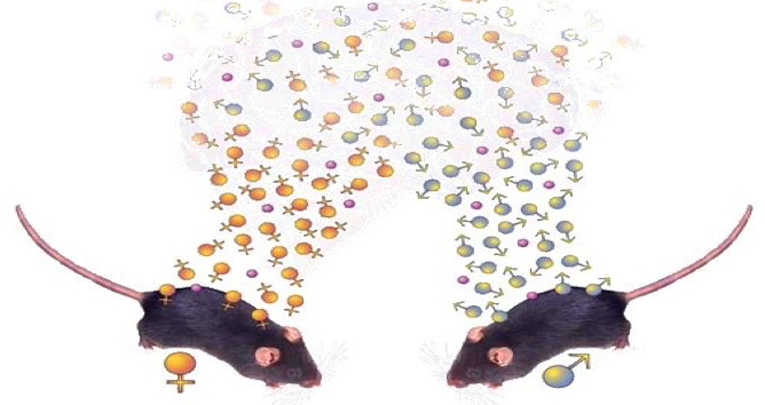
Scientific Reports, October 2016
Opposite-sex attraction in male mice requires testosterone dependent regulation of adult olfactory bulb neurogenesis
Schellino R 1, 2 , Trova S 1, 2 , Cimino I 3 , Farinetti A 2, 4 , Jongbloets BC 5 , Pasterkamp RJ 5 , Panzica G 2, 4, 6 , Giacobini P 3, 7 , De Marchis S 1, 2, 6 , Peretto P 1, 2, 6
Opposite-sex attraction in most mammals depends on the fine-tuned integration of pheromonal stimuli with gonadal hormones in the brain circuits underlying sexual behaviour. Neural activity in these circuits is regulated by sensory processing in the accessory olfactory bulb (AOB), the first central station of the vomeronasal system.
Recent evidence indicates adult neurogenesis in the AOB is involved in sex behaviour; however, the mechanisms underlying this function are unknown. By using Semaphorin 7A knockout (Sema7A ko) mice, which show a reduced number of gonadotropin-releasing-hormone neurons, small testicles and subfertility, and wild-type males castrated during adulthood, we demonstrate that the level of circulating testosterone regulates the sex-specific control of AOB neurogenesis and the vomeronasal system activation, which influences opposite-sex cue preference/attraction in mice.
Overall, these data highlight adult neurogenesis as a hub for the integration of pheromonal and hormonal cues that control sex-specific responses in brain circuits.







